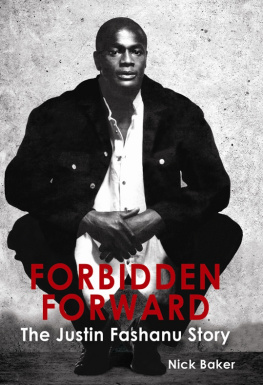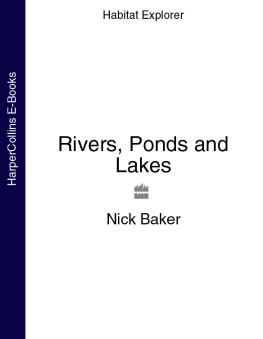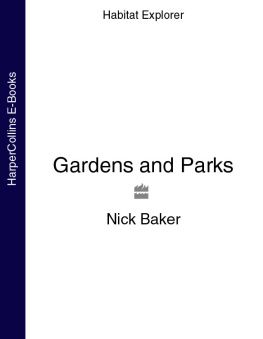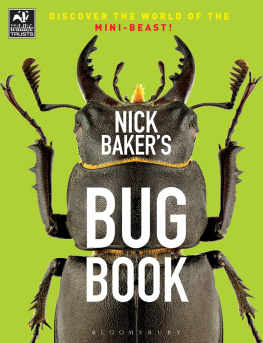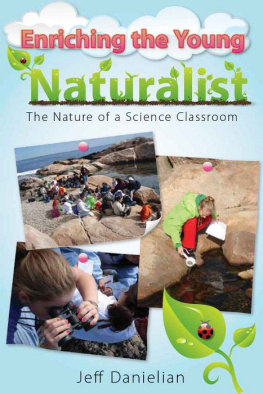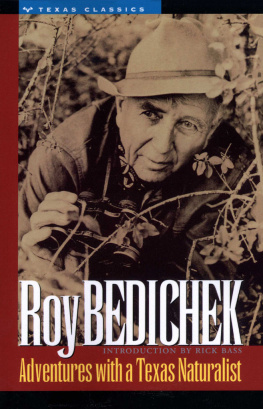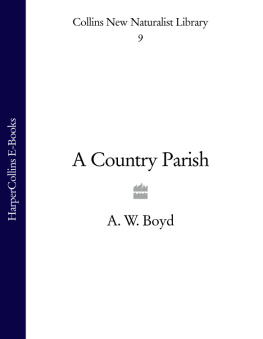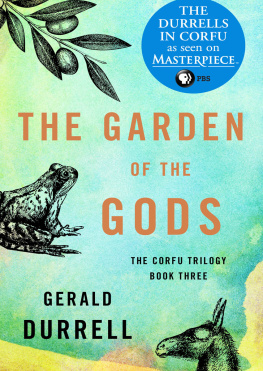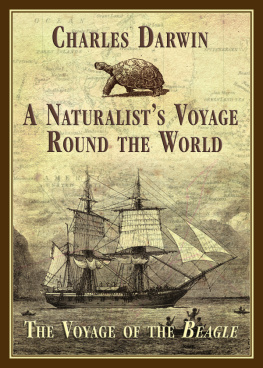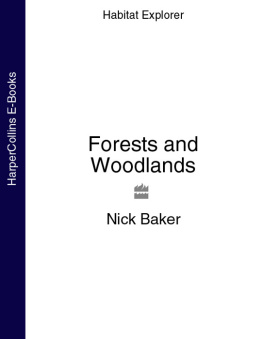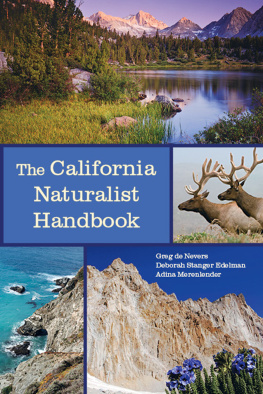I wrote this book in the memory of all the mentors, the old guard of naturalists who taught me so much, but more importantly for the new wave, the guardians of the future, to whom we hand over the baton. I include my own little naturalist in this number; Elvie this book is for you.


The RSPB is the countrys largest nature conservation charity, inspiring everyone to give nature a home so that birds and wildlife can thrive again.
By buying this book you are helping to fund The RSPBs conservation work.
If you would like to know more about the RSPB, visit the website at www.rspb.org.uk, write to The RSPB, The Lodge, Sandy, Bedfordshire, SG19 2DL, or call 01767 680551.
Bloomsbury Natural History
An imprint of Bloomsbury Publishing Plc
| 50 Bedford Square | 1385 Broadway |
| London | New York |
| WC1B 3DP | NY 10018 |
| UK | USA |
www.bloomsbury.com
Bloomsbury is a trademark of Bloomsbury Publishing plc
This electronic edition published in 2015 by Bloomsbury Publishing Plc
First published 2015
Nick Baker, 2015 Photographs Nick Baker, 2015 except for Illustrations Lizzie Harper, 2015
Nick Baker has asserted his right under the Copyright, Designs and Patents Act, 1988, to be identified as Author of this work.
All rights reserved
You may not copy, distribute, transmit, reproduce or otherwise make available this publication (or any part of it) in any form, or by any means (including without limitation electronic, digital, optical, mechanical, photocopying, printing, recording or otherwise), without the prior written permission of the publisher. Any person who does any unauthorised act in relation to this publication may be liable to criminal prosecution and civil claims for damages.
No responsibility for loss caused to any individual or organisation acting on or refraining from action as a result of the material in this publication can be accepted by Bloomsbury or the author.
A catalogue record for this book is available from the British Library.
Library of Congress Cataloguing-in-Publication data has been applied for.
| ISBN: | PB: | 978-1-4729-1207-7 |
| ePDF: | 978-1-4729-2206-9 |
| ePub: | 978-1-4729-1208-4 |
To find out more about our authors and books visit www.bloomsbury.com. Here you will find extracts, author interviews, details of forthcoming events and the option to sign up for our newsletters.
Contents

Foreword
Having spent some of the most enjoyable years of my life researching, writing and filming The Amateur Naturalist with my late husband, Gerald Durrell, I was delighted to be asked to write this foreword for Nick Bakers The Complete Naturalist and eager to see the finished manuscript. How was Nick going to handle the vast subject of natural history, what exciting new ideas and techniques had he come across, would he have had as much fun as Gerry and I did putting the information together? Did he hope, as we hoped, that a generation of readers would take the book to their hearts and learn to cherish nature and become part of the movement to protect it?
My keen anticipation was hugely rewarded, and I was enticed into the natural world all over again by this book. It begins very sensibly with what equipment you need as an amateur naturalist, offering tips as to how to choose and use it, from binoculars and hand lenses to notebooks and clothing. It then leads you logically through the animal and plant kingdoms: mammals, birds, reptiles, amphibians, fish, invertebrates and plants. You get a solid grounding in what to look for and how to observe it, but Nick also grabs your attention with unusual facts how to tell a right-handed from a left-handed squirrel, for example punctuated with the occasional hysterically funny personal reminiscence. The activities he suggests are creative and fun, such as recognising bird calls in the dawn chorus, a foolproof method for rearing tadpoles, what you do to preserve a spiders web. The projects are all safe and eco-friendly as well.
Nick has a deft style and quirky sense of humour that brings to life the animals and plants he is writing about. More than anything, he makes you want to spend time outdoors becoming a nature detective. He teaches you how to pick up and interpret signs that reveal an animals behaviour, and to gather clues that will unravel ecological mysteries.
This is an updated and expanded version of Nicks The New Amateur Naturalist, and I am convinced that this book is more important today, ten years later, than ever before. We humans absolutely must understand the natural world. We need to know what its components are and how they come together to make operational ecosystems. We must appreciate how the ecosystems in turn influence each other to make the whole planet tick. Otherwise, the rate at which we change the natural order of things will outpace our ability to correct our environmental mistakes, let along avoid making them in the first place. We can already see our eco-blunders wherever we look severe floods and droughts and actual and imminent extinctions of animals and plants are examples of the consequences of the human footprint on the planet. But if decisions which impact on the environment are made by people who understand and cherish the natural world, then our tread will be lighter and the planet a more hospitable place for all its inhabitants in the future.
The more youngsters are encouraged to pursue natural history, the more likely it is that they, as the decision-makers of the future, will make the right choices.
Lee Durrell
19 December 2014

Introduction
For as long as I can remember I have been mesmerised by plants and animals, and not just the living, breathing ones. Everything about them, feeding signs and other evidence they leave behind, even their dead bodies can tell us so much about them. But although I have been an amateur naturalist all my life, to this day I continue to learn how and where to look at the living world. That is really what this book is about using my experiences and the tricks of the trade that I have amassed over the years to gain more insight into the world we live in.
My interest started as soon as I could crawl and pretty soon I was putting my mother through situations no mother can be prepared for: giant silk moths in the wardrobe, tarantulas under the bed and the countless dead animals I would find while out and about and bring home to dismantle at leisure a form of behaviour my family found particularly disturbing! But to me there was very little difference between wishing to see and understand the internal workings of an animal and my brother pulling a lawn-mower engine to pieces for the same reason.
Through those dark, misunderstood times, a wonderful book called The Amateur Naturalist by Gerald and Lee Durrell became my friend, inspiring me to look, investigate and satisfy my natural curiosity. That book was a major influence on my becoming a naturalist, and it was very much the inspiration behind this one. I am deeply grateful to Lee Durrell for providing such a generous foreword to
Next page

